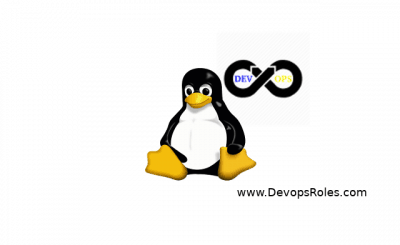What do you need to do in the initial configuration of CentOS 7? In this tutorial, Step by step I think need the initial configuration for Centos 7.
Table of Contents
- 1 The initial configuration of CentOS 7
- 1.1 Time synchronization.
- 1.2 Setting Command history
- 1.3 Enable i-search
- 1.4 Writing outputs to log file and console
- 1.5 Monitor User Activity with psacct
- 1.6 Detection with OSSEC HIDS
- 1.7 Install and enable AIDE
- 1.8 Update Your System
- 1.9 Prohibit login without password
- 1.10 su and sudo settings
- 1.11 sudo without password
- 1.12 Passwordless root switch
- 1.13 su authorized user limit
- 1.14 Adding administrative users
- 1.15 Changing the hostname
- 1.16 The setting of less command.
- 1.17 vim command
- 1.18 Yum plugin
- 1.19 utility
- 1.20 Compression and decompression
- 1.21 Installing the monitoring tool
- 1.22 Disabling GSSAPIAuthentication
- 1.23 limit of the number of old kernel packages
- 1.24 Interactive option
- 1.25 File rewrite prohibition by redirection
- 1.26 Yum Disable Excludes
- 1.27 security settings
- 2 Conclusion
The initial configuration of CentOS 7
Time synchronization.
Setting Command history
The command in the example ( date, history,w, top, df) does not remain in the command history.
# cat << "_EOF" > /etc/profile.d/history.sh && source /etc/profile.d/history.sh # The content command history HISTTIMEFORMAT='%F %T ' HISTSIZE=100000 HISTFILESIZE=100000 HISTIGNORE='date,history:w:top:df' HISTCONTROL=ignoreboth PROMPT_COMMAND='history -a; history -c; history -r' _EOF
Enable i-search
Ctrl + r switches to the command history search mode, but by default, it cannot be re-searched in the reverse direction.
# echo '[ -t 0 ] && stty -ixon' > /etc/profile.d/stty.sh && source /etc/profile.d/stty.shWriting outputs to log file and console
cat << "_EOF_" > /etc/profile.d/script.sh && source /etc/profile.d/script.sh
# output operation log
P_PROC=`ps aux | grep $PPID | grep sshd | awk '{ print $11 }'`
if [ "$P_PROC" = sshd: ]; then
script -q /var/log/script/`whoami`_`date '+%F_%H%M%S'`.log
exit
fi
_EOF_
# chmod 777 /etc/profile.d/script.shMonitor User Activity with psacct
You can use the lastcomm command to check which user executed which command when.
# yum -y install psacct && systemctl start $_ && systemctl enable $_Detection with OSSEC HIDS
# yum install -y epel-release wget && curl -s http://www.atomicorp.com/installers/atomic | sh && yum install -y ossec-hids-server /var/ossec/bin/ossec-configure
# sed -i.org '/directories check_all/s/"yes"/"yes" realtime="yes"/' /var/ossec/etc/ossec.conf
# systemctl start ossec-hids && systemctl enable $_Install and enable AIDE
Update Your System
# yum clean all && yum -y updateProhibit login without password
# sed -i 's/\<nullok\>//g' /etc/pam.d/system-authsu and sudo settings
# sed -i.org '/NOPASSWD/ s/^# //' /etc/sudoers
# sed -i.org '/use_uid/ s/^#//' /etc/pam.d/susudo without password
Modify /etc/sudoers file
%wheel ALL=(ALL) NOPASSWD: ALLPasswordless root switch
Modify /etc/pam.d/su file
auth sufficient pam_wheel.so trust use_uidmodify /etc/pam.d/su file
auth required pam_wheel.so use_uidAdding administrative users
# useradd huupv && passwd $_ && usermod -G wheel $_ && getent group wheel
# sudo -u huupv echo 'huupv@devopsroles.com' > ~/.forward
# sed -i /etc/aliases -e '/root:/ s/^#//' -e '/root:/ s/marc/huupv/' && newaliases
# echo "Test mail" | sendmail rootChanging the hostname
# hostnamectl set-hostname server1.devopsroles.comThe setting of less command.
cat << '_EOF_' >> ~/.bashrc
export VISUAL=vim
export LESS="-M"
_EOF_The -M option always displays the file name, number of lines, and progress.
vim command
cat << '_EOF_' >> ~/.vimrc && mkdir -p ~/.vim/tmp
set encoding=utf-8
set directory=~/.vim/tmp
set backupdir=~/.vim/tmp
set undodir=~/.vim/tmp
_EOF_Change the location of temporary files such as .swp.
Yum plugin
# yum -y install epel-release && yum -y yum-axelget yum-changelog yum-cron yum-plugin-ps yum-plugin-remove-with-leaves yum-plugin-rpm-warm-cache yum-plugin-show-leaves yum-utilsutility
There are many commands that are not installed in minimal.
# yum -y install bind-utils net-tools policycoreutils-python psmisc rlwrap traceroute tree vim-enhanced wgetCompression and decompression
# yum -y install epel-release && yum -y install unzip bzip2 lbzip2 pbzip2 pigz pxzInstalling the monitoring tool
Disabling GSSAPIAuthentication
Speed up SSH login by disabling GSSAPIAuthentication.
# sed -i '/GSSAPIAuthentication / s/yes/no/' /etc/ssh/sshd_configlimit of the number of old kernel packages
# sed -e '/installonly_limit/ s/5/2/' -i /etc/yum.confInteractive option
cat << "_EOF_" > /etc/profile.d/alias.sh
alias crontab='crontab -i'
alias cp='cp -i'
alias mv='mv -i'
alias rm='rm -i'
_EOF_File rewrite prohibition by redirection
Edit .bashrc file
set -o noclobberYum Disable Excludes
# echo "exclude=kernel* centos*" >> /etc/yum.conf
# echo "alias yum='yum --disableexcludes=all'" >> /etc/profile.d/yum.shsecurity settings
sed -i.org /etc/login.defs -e '/PASS_MIN_DAYS/ s/0/1/' -e '/PASS_MAX_DAYS/ s/99999/3650/'
sed -i /etc/profile -e 's/umask 002/umask 027/' -e 's/umask 022/umask 027/'
cat << "_EOF_" > /etc/modprobe.d/blacklist.conf
blacklist usb-storage
blacklist firewire_core
blacklist firewire_ohci
_EOF_
for i in $(find /lib/modules/`uname -r`/kernel/drivers/net/wireless -name "*.ko" -type f) ; do echo blacklist $i >> /etc/modprobe.d/blacklist-wireless ; done
sed -i.org 's/#AllowTcpForwarding yes/AllowTcpForwarding no/' /etc/ssh/sshd_config
sed -i 's/#ClientAliveCountMax 3/ClientAliveCountMax 2/' /etc/ssh/sshd_config
sed -i 's/#Compression delayed/Compression no/' /etc/ssh/sshd_config
sed -i 's/#LogLevel INFO/LogLevel VERBOSE/' /etc/ssh/sshd_config
sed -i 's/#MaxAuthTries 6/MaxAuthTries 2/' /etc/ssh/sshd_config
sed -i 's/#MaxSessions 10/MaxSessions 2/' /etc/ssh/sshd_config
##sed -i 's/#PermitRootLogin yes/PermitRootLogin no/' /etc/ssh/sshd_config
##sed -i 's/#Port 22/Port 10022/' /etc/ssh/sshd_config
sed -i 's/#TCPKeepAlive yes/TCPKeepAlive no/' /etc/ssh/sshd_config
sed -i 's/#UseDNS yes/UseDNS no/' /etc/ssh/sshd_config
sed -i 's/X11Forwarding yes/X11Forwarding no/' /etc/ssh/sshd_config
sed -i 's/#AllowAgentForwarding yes/AllowAgentForwarding no/' /etc/ssh/sshd_config
cat << "_EOF_" >> /etc/sysctl.conf
kernel.kptr_restrict=2
kernel.sysrq=0
net.ipv4.conf.all.accept_redirects=0
net.ipv4.conf.all.log_martians=1
net.ipv4.conf.all.send_redirects=0
net.ipv4.conf.default.accept_redirects=0
net.ipv4.conf.default.log_martians=1
net.ipv4.tcp_timestamps=0
net.ipv6.conf.all.accept_redirects=0
net.ipv6.conf.default.accept_redirects=0
_EOF_
# sysctl -p
# chmod 700 /usr/bin/as
Fail2ban
# yum -y install epel-release && yum -y install fail2ban{,-systemd}
cat << "_EOF_" > /etc/fail2ban/jail.local
[DEFAULT]
ignoreip = 127.0.0.1/8 192.168.0.0/24
[sshd]
enabled = true
_EOF_
# fail2ban-client -d
# systemctl start fail2ban && systemctl enable $_
# fail2ban-client status
# fail2ban-client status sshdConclusion
You have the initial configuration of CentOS 7. I hope will this your helpful. Thank you for reading the DevopsRoles page!

